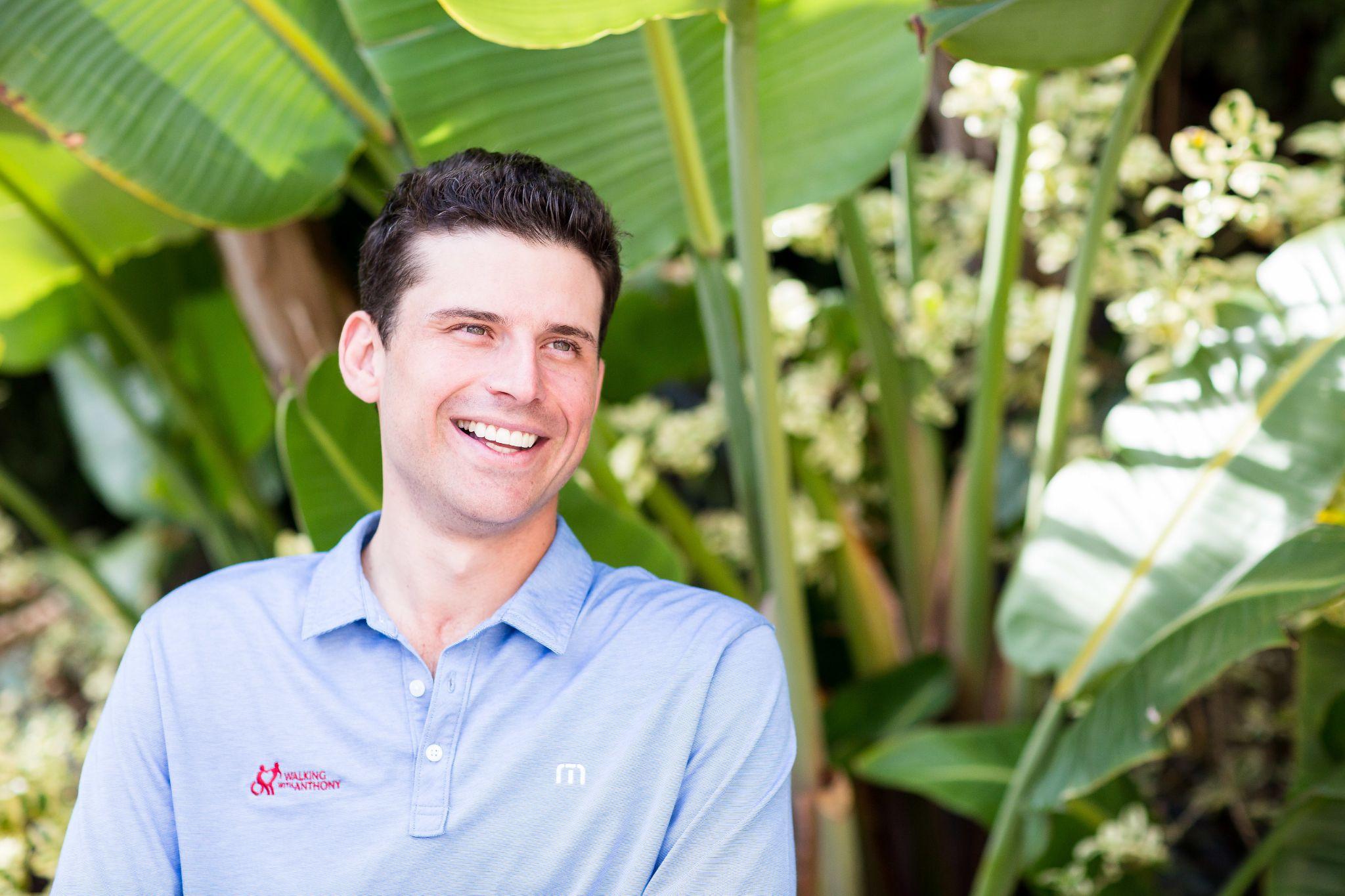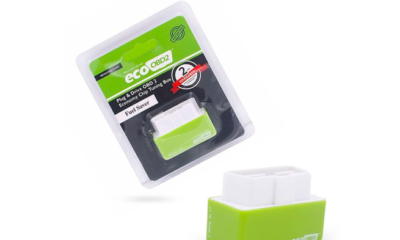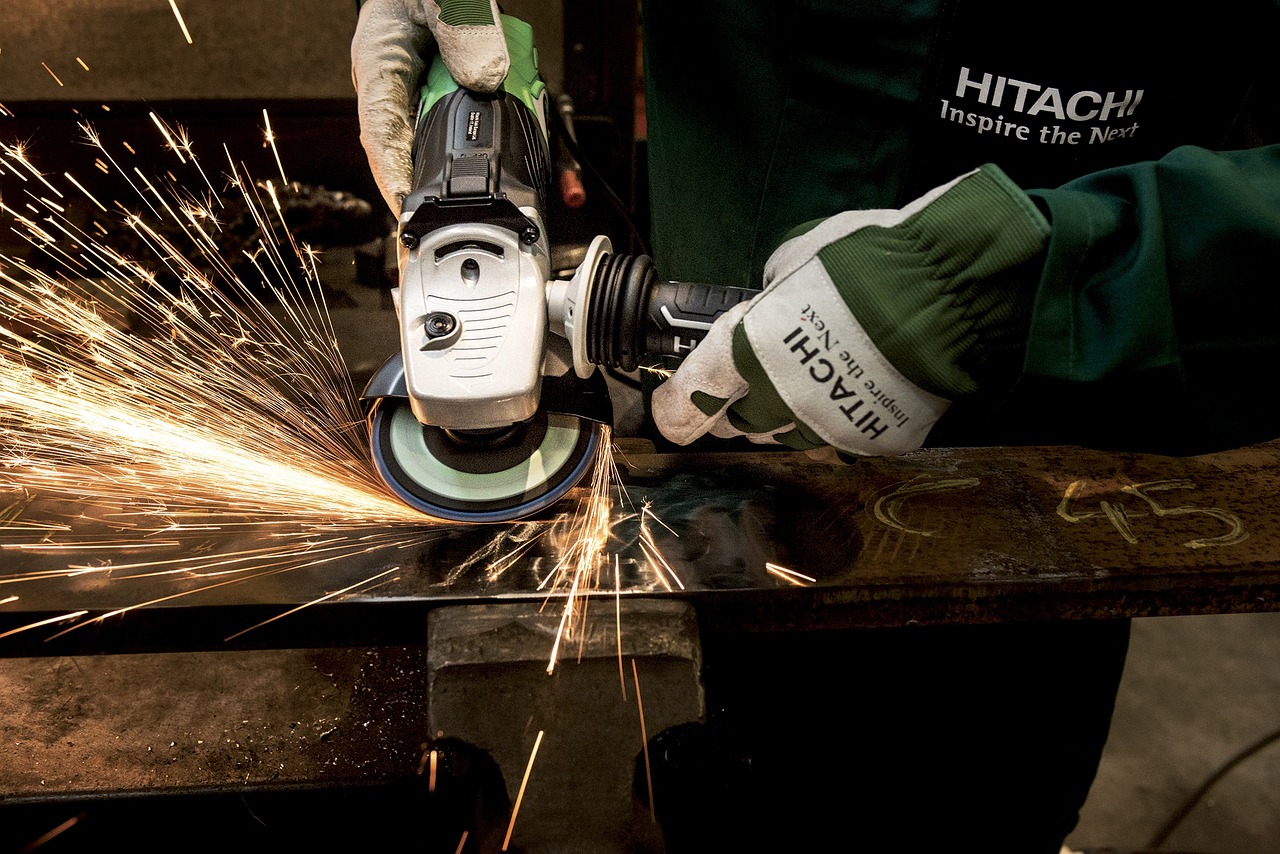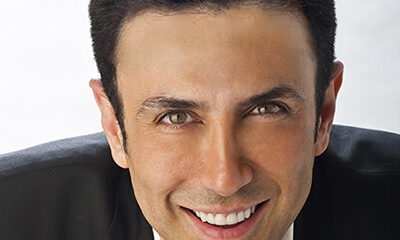Business
Turning Tragedy into Triumph Through Walking With Anthony

On the morning of February 6, 2010, Anthony Purcell took a moment to admire the churning surf before plunging into the waves off Miami Beach. Though he had made the dive numerous times before, that morning was destined to be different when he crashed into a hidden sandbar, sustaining bruises to his C5 and C6 vertebrae and breaking his neck.
“I was completely submerged and unable to rise to the surface,” Purcell recalls. “Fortunately, my cousin Bernie saw what was happening and came to my rescue. He saved my life, but things would never be the same after that dive.”
Like thousands of others who are confronted with a spinal cord injury (SCI), Purcell plunged headlong into long months of hopelessness and despair. Eventually, however, he learned to turn personal tragedy into triumph as he reached out to fellow SCI victims by launching Walking With Anthony.
Living with SCI: the first dark days
Initial rehabilitation for those with SCIs takes an average of three to six months, during which time they must relearn hundreds of fundamental skills and adjust to what feels like an entirely new body. Unfortunately, after 21 days, Purcell’s insurance stopped paying for this essential treatment, even though he had made only minimal improvement in such a short time.
“Insurance companies cover rehab costs for people with back injuries, but not for people with spinal cord injuries,” explains Purcell. “We were practically thrown to the curb. At that time, I was so immobile that I couldn’t even raise my arms to feed myself.”
Instead of giving up, Purcell’s mother chose to battle his SCI with long-term rehab. She enrolled Purcell in Project Walk, a rehabilitation facility located in Carlsbad, California, but one that came with an annual cost of over $100,000.
“My parents paid for rehabilitation treatment for over three years,” says Purcell. “Throughout that time, they taught me the importance of patience, compassion, and unconditional love.”
Yet despite his family’s support, Purcell still struggled. “Those were dark days when I couldn’t bring myself to accept the bleak prognosis ahead of me,” he says. “I faced life in a wheelchair and the never-ending struggle for healthcare access, coverage, and advocacy. I hit my share of low points, and there were times when I seriously contemplated giving up on life altogether.”
Purcell finds a new purpose in helping others with SCIs
After long months of depression and self-doubt, Purcell’s mother determined it was time for her son to find purpose beyond rehabilitation.
“My mom suggested I start Walking With Anthony to show people with spinal cord injuries that they were not alone,” Purcell remarks. “When I began to focus on other people besides myself, I realized that people all around the world with spinal cord injuries were suffering because of restrictions on coverage and healthcare access. The question that plagued me most was, ‘What about the people with spinal cord injuries who cannot afford the cost of rehabilitation?’ I had no idea how they were managing.”
Purcell and his mother knew they wanted to make a difference for other people with SCIs, starting with the creation of grants to help cover essentials like assistive technology and emergency finances. To date, they have helped over 100 SCI patients get back on their feet after suffering a similar life-altering accident.
Purcell demonstrates the power and necessity of rehab for people with SCIs
After targeted rehab, Purcell’s physical and mental health improved drastically. Today, he is able to care for himself, drive his own car, and has even returned to work.
“Thanks to my family’s financial and emotional support, I am making amazing physical improvement,” Purcell comments. “I mustered the strength to rebuild my life and even found the nerve to message Karen, a high school classmate I’d always had a thing for. We reconnected, our friendship evolved into love, and we tied the knot in 2017.”
After all that, Purcell found the drive to push toward one further personal triumph. He married but did not believe a family was in his future. Regardless of his remarkable progress, physicians told him biological children were not an option.
Despite being paralyzed from the chest down, Purcell continued to look for hope. Finally, Dr. Jesse Mills of UCLA Health’s Male Reproductive Medicine department assured Purcell and his wife that the right medical care and in vitro fertilization could make their dream of becoming parents a reality.
“Payton joined our family in the spring of 2023,” Purcell reports. “For so long, I believed my spinal cord injury had taken everything I cared about, but now I am grateful every day. I work to help other people with spinal cord injuries find the same joy and hope. We provide them with access to specialists, funding to pay for innovative treatments, and the desire to move forward with a focus on the future.”
Business
High Volume, High Value: The Business Logic Behind Black Banx’s Growth

In fintech, success no longer hinges on legacy prestige or brick-and-mortar branches—it’s about speed, scale, and precision. Black Banx, under the leadership of founder and CEO Michael Gastauer, has exemplified this model, turning its high-volume approach into high-value results.
The company’s Q1 2025 performance tells the story: $1.6 billion in pre-tax profit, $4.3 billion in revenue, and 9 million new customers added, bringing its total customer base to 78 million across 180+ countries.
But behind the numbers lies a carefully calibrated business model built for exponential growth. Here’s how Black Banx’s strategy of scale is redefining what profitable banking looks like in the digital age.
Scaling at Speed: Why Volume Matters
Unlike traditional banks, which often focus on deepening relationships with a limited set of customers, Black Banx thrives on breadth and transactional frequency. Its digital infrastructure supports onboarding millions of users instantly, with zero physical presence required. Customers can open accounts within minutes and transact across 28 fiat currencies and 2 cryptocurrencies (Bitcoin and Ethereum) from anywhere in the world.
Each customer interaction—whether it’s a cross-border transfer, crypto exchange, or FX transaction—feeds directly into Black Banx’s revenue engine. At scale, these micro-interactions yield macro results.
Real-Time, Global Payments at the Core
One of Black Banx’s most powerful value propositions is real-time cross-border payments. By enabling instant fund transfers across currencies and countries, the platform removes the frictions associated with SWIFT-based systems and legacy banking networks.
This service, used by individuals and businesses alike, generates:
- Volume-based revenue from transaction fees
- Exchange spreads on currency conversion
- Premium service income from business clients managing international payroll or vendor payments
With operations in underserved regions like Africa, South Asia, and Latin America, Black Banx is not only increasing volume—it’s tapping into fast-growing financial ecosystems overlooked by legacy banks.
The Flywheel Effect of Crypto Integration
Crypto capabilities have added another dimension to the company’s high-volume model. As of Q1 2025, 20% of all Black Banx transactions involved cryptocurrency, including:
- Crypto-to-fiat and fiat-to-crypto exchanges
- Crypto deposits and withdrawals
- Payments using Bitcoin or Ethereum
The crypto integration attracts both retail users and blockchain-native businesses, enabling them to:
- Access traditional banking rails
- Convert assets seamlessly
- Operate with lower transaction fees than those found in standard financial systems
By being one of the few regulated platforms offering full banking and crypto support, Black Banx is monetizing the convergence of two financial worlds.
Optimized for Operational Efficiency
High volume is only profitable when costs are contained—and Black Banx has engineered its operations to be lean from day one. With a cost-to-income ratio of just 63% in Q1 2025, it operates significantly more efficiently than most global banks.
Key enablers of this cost efficiency include:
- AI-driven compliance and customer support
- Cloud-native architecture
- Automated onboarding and KYC processes
- Digital-only servicing without expensive physical infrastructure
The outcome is a platform that not only scales, but does so without sacrificing margin—each new customer contributes to profit rather than diluting it.
Business Clients: The Value Multiplier
While Black Banx’s massive customer base is largely consumer-driven, its business clients are high-value accelerators. From SMEs and startups to crypto firms and global freelancers, businesses use Black Banx for:
- International transactions
- Multi-currency payroll
- Crypto-fiat settlements
- Supplier payments and invoicing
These clients tend to:
- Transact more frequently
- Use a broader range of services
- Generate significantly higher revenue per user
Moreover, Black Banx’s API integrations and tailored enterprise solutions lock in these clients for the long term, reinforcing predictable and scalable growth.
Monetizing the Ecosystem, Not Just the Account
The genius of Black Banx’s model is that it monetizes not just accounts, but entire customer journeys. A user might:
- Onboard in minutes
- Deposit funds from a crypto wallet
- Exchange currencies
- Pay an overseas vendor
- Withdraw to a local bank account
Each of these actions touches a different monetization lever—FX spread, transaction fee, crypto conversion, or premium service charge. With 78 million customers doing variations of this at global scale, the cumulative financial impact becomes immense.
Strategic Expansion, Not Blind Growth
Unlike many fintechs that chase customer acquisition without a clear monetization path, Black Banx aligns its growth with strategic market opportunities. Its expansion into underbanked and high-demand markets ensures that:
- Customer acquisition costs stay low
- Services meet genuine needs (e.g., cross-border income, crypto access)
- Revenue per user grows over time
It’s not just about acquiring more customers—it’s about acquiring the right customers, in the right markets, with the right needs.
The Future Belongs to Scalable Banking
Black Banx’s ability to transform high-volume engagement into high-value profitability is more than just a fintech success—it’s a signal of what the future of banking looks like. In a world where agility, efficiency, and inclusion define competitive advantage, Black Banx has created a blueprint for digital banking dominance.
With $1.6 billion in quarterly profit, nearly 80 million users, and services that span the globe and the blockchain, the company is no longer just scaling—it’s compounding. Each new user, each transaction, and each feature builds upon the last.
This is not the story of a bank growing.
This is the story of a bank accelerating.
-

 Tech4 years ago
Tech4 years agoEffuel Reviews (2021) – Effuel ECO OBD2 Saves Fuel, and Reduce Gas Cost? Effuel Customer Reviews
-

 Tech6 years ago
Tech6 years agoBosch Power Tools India Launches ‘Cordless Matlab Bosch’ Campaign to Demonstrate the Power of Cordless
-

 Lifestyle6 years ago
Lifestyle6 years agoCatholic Cases App brings Church’s Moral Teachings to Androids and iPhones
-

 Lifestyle4 years ago
Lifestyle4 years agoEast Side Hype x Billionaire Boys Club. Hottest New Streetwear Releases in Utah.
-

 Tech7 years ago
Tech7 years agoCloud Buyers & Investors to Profit in the Future
-

 Lifestyle5 years ago
Lifestyle5 years agoThe Midas of Cosmetic Dermatology: Dr. Simon Ourian
-

 Health6 years ago
Health6 years agoCBDistillery Review: Is it a scam?
-

 Entertainment6 years ago
Entertainment6 years agoAvengers Endgame now Available on 123Movies for Download & Streaming for Free
